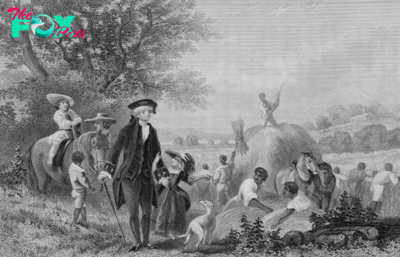History
What Critics of the EPA’s ‘Good Neighbor’ Regulations Get Wrong About the Clean Air Act’s History
On Wednesday, the Supreme Court will hear arguments on postponing the EPA’s "Good Neighbor” rule, a policy designed to address interstate pollution.
The Clean Air Act requires that states that produce pollution upwind of other states ensure that the downwind states can meet air-quality standards. In 2023, the EPA issued a plan to cover 23 states that did not comply with revised standards for ozone. Ohio, Indiana, and West Virginia, alongside several companies and trade unions, are challenging the rule, calling it a “failed experiment” that ignores the intent of the Clean Air Act. They argue that the seminal law did not intend for the EPA to exercise “top-down control” and instead required that the agency “respect[s] the States’ sovereign authority to regulate air quality within their borders under the Act.”
But the History of the Clean Air Act shows otherwise. The law did originally recognize the need for federal control to supplement state actions. It was only later that its requirements were softened. The new regulations are entirely consistent with the vision of the drafters of the law, and its History suggests that adhering to this vision could both save lives and bolster the economy.
In 1948, a poisonous smog killed 20 people and caused severe health issues for thousands more in the Pittsburgh area. The “Donora Smog” attracted national attention and ignited a fight for federal clean air protections. But at first, these efforts went nowhere. While Congress increased appropriations for studying air pollution, all other attempts to pass clean air legislation failed during the 1950s. The Eisenhower Administration was also uninterested in handling what it considered a largely local phenomenon.
But there was greater success at the state level, and by 1963, 33 states and territories had enacted air pollution laws of some kind. Even so, only two states — California and Oregon — implemented far-reaching air quality standards.
Read More: Improvements in U.S. Air Quality Are Saving Thousands of Lives a Year
The inauguration of John F. Kennedy, however, marked the beginning of a new attitude toward environmental issues. In early 1963, Kennedy called for legislation to authorize the Public Health Service to “take action to abate interstate air pollution, along the general lines of the existing water pollution control enforcement measures.”
Congress answered his call. During Senate hearings for what became the Clean Air Act of 1963 — the first federal air-quality law — Maine Senator Ed Muskie, the chairman of the newly formed Special Subcommittee on Air and Water Pollution, noted that despite the claims of various industrial organizations and companies that local initiatives were sufficient for handling pollution, the cities and states with the strongest anti-pollution measures were still urging the Senate to pass federal legislation. In particular, he recognized that if a state government had no interest in handling local or interstate pollution issues, “the people would be left without recourse.”
Muskie initially avoided supporting national standards, but he and his colleagues slowly recognized the need for a more “top-down” approach. This coincided with a sudden increase in Americans’ interest in the environment and pollution abatement, driven by a rise in concern about quality-of-life issues and the rise of activist movements in the 1960s. By the end of the decade, both Republicans and Democrats advocated for stringent regulations. In his 1970 State of the Union address, President Richard Nixon called for “Clean air, clean water, open spaces” to once again be the “birthright of every American,” adding that “If we act now — they can be.”
The Clean Air Amendments of 1970 required the federal government to draw up national ambient air quality standards (NAAQS) for six major pollutants, including carbon monoxide, sulfur dioxide, and ground level ozone. States had five years to develop implementation plans to adhere to them. Congress deliberately required the EPA to ignore economic and technological constraints when designing the NAAQS. Indeed, Muskie argued that protecting public health needed to be the primary concern in crafting these standards.
The passage of the 1970 law also created standards to ensure businesses would use the best available technology to alleviate any new emissions, and it required automakers to comply with standards designed to dramatically lower carbon monoxide, nitrogen oxide, and hydrocarbon emissions over the next few years.
The new regulations provoked immediate backlash from industry. As stagflation and the energy crises of the 1970s raised the cost of adhering to them, legislators and lobbyists clashed over how best to incorporate economic concerns into the debates about clean air. When Congress sought to amend the Clean Air Act in 1976, Representatives John Dingell (D-Mich.) and James Broyhill (R-N.C.) offered a bipartisan amendment to postpone auto emission standards and eliminate the nitrogen oxide standard from the act altogether; as one reporter put it, their amendments gave “the industry virtually everything it wanted.”
The bill did not become law, but the battle was just beginning.
In 1977, automakers joined forces with the United Auto Workers union to pressure legislators to lower emissions targets, arguing that the expensive regulations were increasing fuel costs and putting autoworkers out of work. Their efforts to elevate the importance of economic concerns over those of public health proved effective; Congress extended the auto industry’s deadline to meet federal emission standards and required a smaller reduction in two of the three major auto pollutants.
Other industries fared less well in the 1977 Clean Air Amendments because they were unable to coordinate as effectively nor build alliances with labor unions — many of which fought for stricter standards.
But the auto industry’s success was a sign of things to come. In 1982, Republicans tried unsuccessfully to repeal the Clean Air Act altogether, arguing that it was damaging the economy and putting Americans out of work. The Reagan administration was amenable to these arguments, and many unions, including the United Steelworkers, supported the effort. But there remained enough support for clean air protections to thwart this attempt.
Read More: What the Supreme Court's Ruling on the 'Clean Air Act' Means for Carbon Emissions
In 1990, legislators again amended the law in ways that expanded federal responsibilities and produced many environmental gains, including dramatic reductions in acid rain thanks to a successful cap-and-trade program. Acid rain had caused substantial friction between the Midwest and New England as pollutants produced in the former states caused harm in the latter, and the 1990 Clean Air Amendments helped solve this issue.
Even so, the new legislation directed regulators to consider economic and technological issues in decision making and mandated that toxic emissions be judged by “technology standards” rather than by determining health thresholds. As EPA administrator William K. Reilly put it, industries were given “a great deal of latitude” in how to meet air quality standards.
This success did not keep industries from arguing that the costs of clean air outweighed any health benefits. They helped prevent a planned renewal of the Clean Air Act in 1995, and Republicans’ increasing hostility to environmental regulations prevented any major legislative action for more than three decades. The only air quality reforms advanced during this period came from executive actions, but even these considered the impact on industry.
The Trump Administration attempted to weaken clean air regulations deemed harmful to American jobs. For example, during the ill-fated 2018 attempt to get Foxconn Technology, Inc., to locate a factory in Racine, Wis., political officials overruled EPA scientists’ concerns regarding ozone pollution in the region, prioritizing the projected economic benefits over any potential health risks.

Only in 2022, with passage of the INFLation Reduction Act, did Congress take the next step in addressing air pollution. The law mandated that the EPA regulate carbon dioxide and other greenhouse gases as pollutants. The Biden administration also enacted the Good Neighbor regulation, which represented a reinvigoration of the older understanding of the Clean Air Act— one guided by the recognition that pollution spills over and across geographic boundaries, and the belief that public Health should be of paramount concern.
This History undermines the claims that the opponents of these regulations are making to the Supreme Court. Yet, given the Court’s conservative tilt, there is a real risk that the power of the government to implement ecological and public Health regulations will be severely limited. If so, it will have serious costs. The EPA estimates that the Clean Air Act’s regulations prevent roughly 230,000 deaths a year. And the law has dramatically expanded the American economy, adding jobs in pollution-control industries and encouraging Technology investments without much impact on industry revenues.

If the Court limits what the EPA can do, Congress would be wise to act to protect the original intent of the Clean Air Act. The law’s history strongly suggests that strict clean air regulations are a win-win: they protect public health and the economy.
Warren Dennis is a PhD candidate in history at Boston University. His research centers on American energy policy in the late 20th century.
Made by History takes readers beyond the headlines with articles written and edited by professional historians. Learn more about Made by History at TIME here. Opinions expressed do not necessarily reflect the views of TIME editors.
-
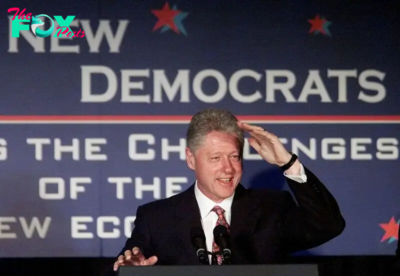
 History1w ago
History1w agoThe Democratic Party Realignment That Empowered Trump
-
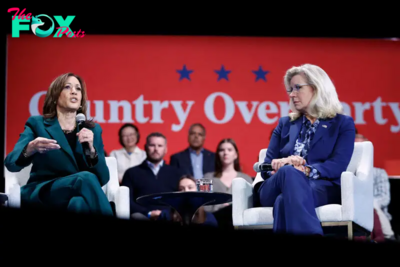
 History1w ago
History1w agoWhy People Should Stop Comparing the U.S. to Weimar Germany
-
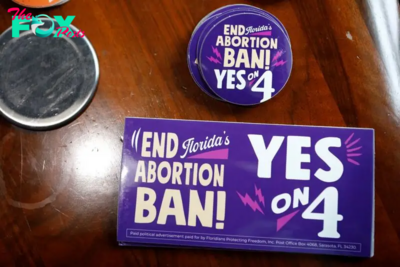
 History1w ago
History1w agoFlorida’s History Shows That Crossing Voters on Abortion Has Consequences
-

 History1w ago
History1w agoThe 1994 Campaign that Anticipated Trump’s Immigration Stance
-
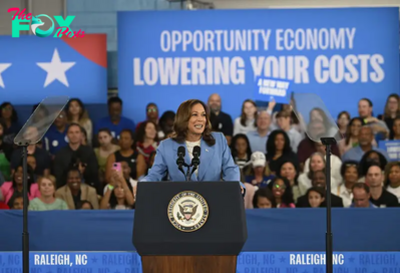
 History2w ago
History2w agoThe Kamala Harris ‘Opportunity Agenda for Black Men’ Might Be Good Politics, But History Reveals It Has Flaws
-
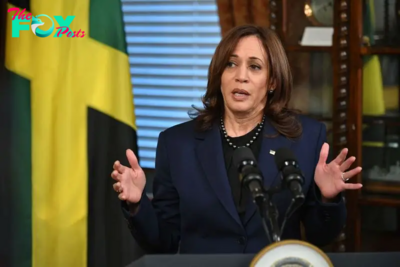
 History2w ago
History2w agoLegacies of Slavery Across the Americas Still Shape Our Politics
-

 History2w ago
History2w agoKamala Harris Is Dressing for the Presidency
-
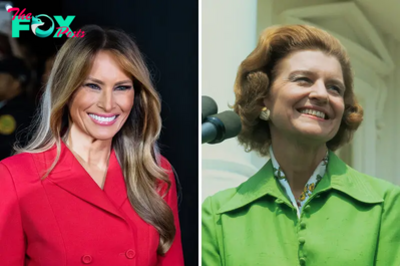
 History2w ago
History2w agoWhat Melania Trump’s Decision to Speak Out on Abortion Says About the GOP


